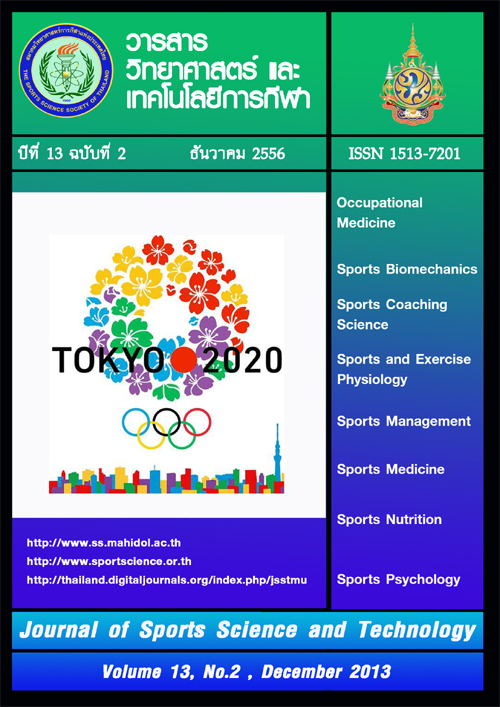THE EFFECT OF TAPING ON BIOMECHANICAL FACTORS RELATED TO ANTERIOR CRUCIATE LIGAMENTS INJURIES IN BASKETBALL JUMP SHOT
Keywords:
Taping, Anterior Cruciate Ligament, Jump shot, BasketballAbstract
This research aimed to study the efficiency of anterior cruciate ligaments taping (ACL taping) on biomechanical factors related to anterior cruciate ligaments (ACL) injuries in basketball jump shot. The research study employed a one way repeated measure to control for variance resulting from the difference in skill levels of participants, in order to convey only the effect of taping. Ten male basketball players who had chronic ACL injury, and were aged 18-30, participated in this study. The order of taping or non use of taping was random. If the taping was sampled first, the ACL taping technique was applied to the injured knee. Retro-reflective markers were affixed to their lower bodies. Participants performed 5 jump shots with taping, deploying maximum effort. Thereafter, they performed 5 jump shots without taping. The motion of participants was captured by eight high speed cameras at 240 Hz, whilst a force plate recorded the Ground Reaction Force, synchronously. The spatial position of the reflective markers, and the Ground Reaction Force, were used to compute the Joint Reaction Force (JRF), and moment of the knee, by inverse dynamic. Data occurred during the jump were used for statistical testing, One way ANOVA with repeated measure, and the significant level was set at 0.05.
The result revealed that ACL taping limited range of motion of both frontal and horizontal planes. Moreover, it reduced the anterior knee JRF, as well as, the extension, valgus and internal rotation moments of the knee compared to non use of taping.





